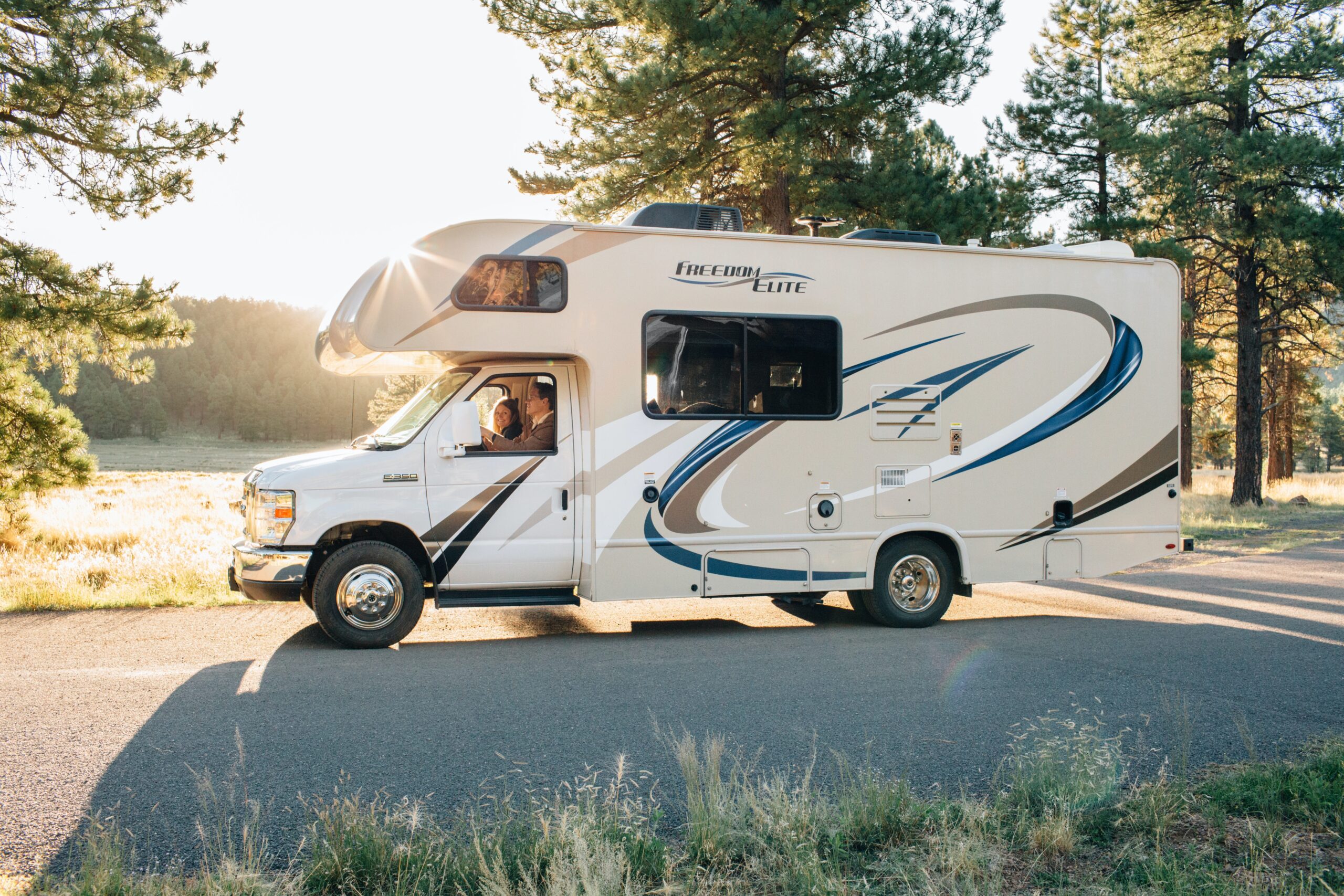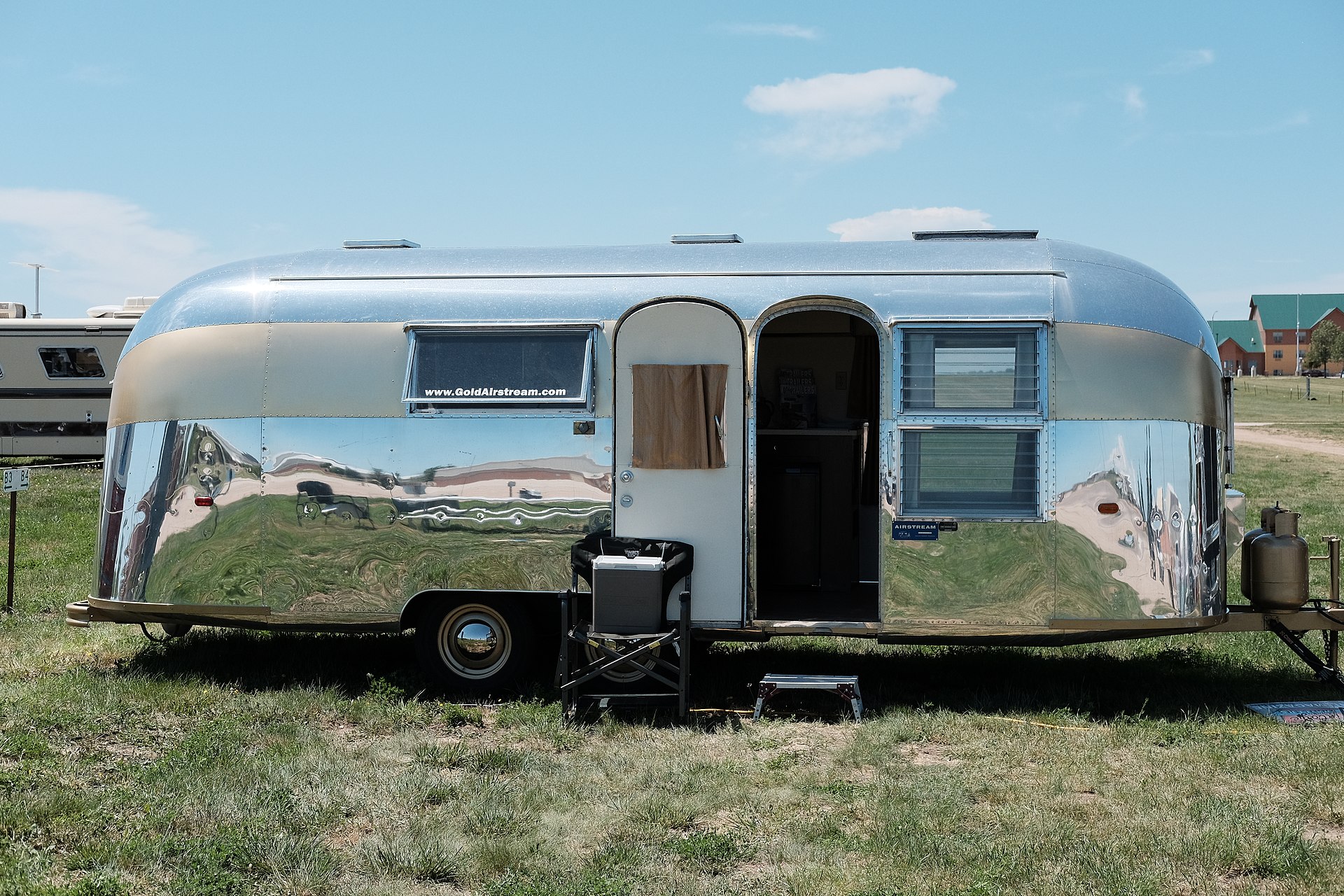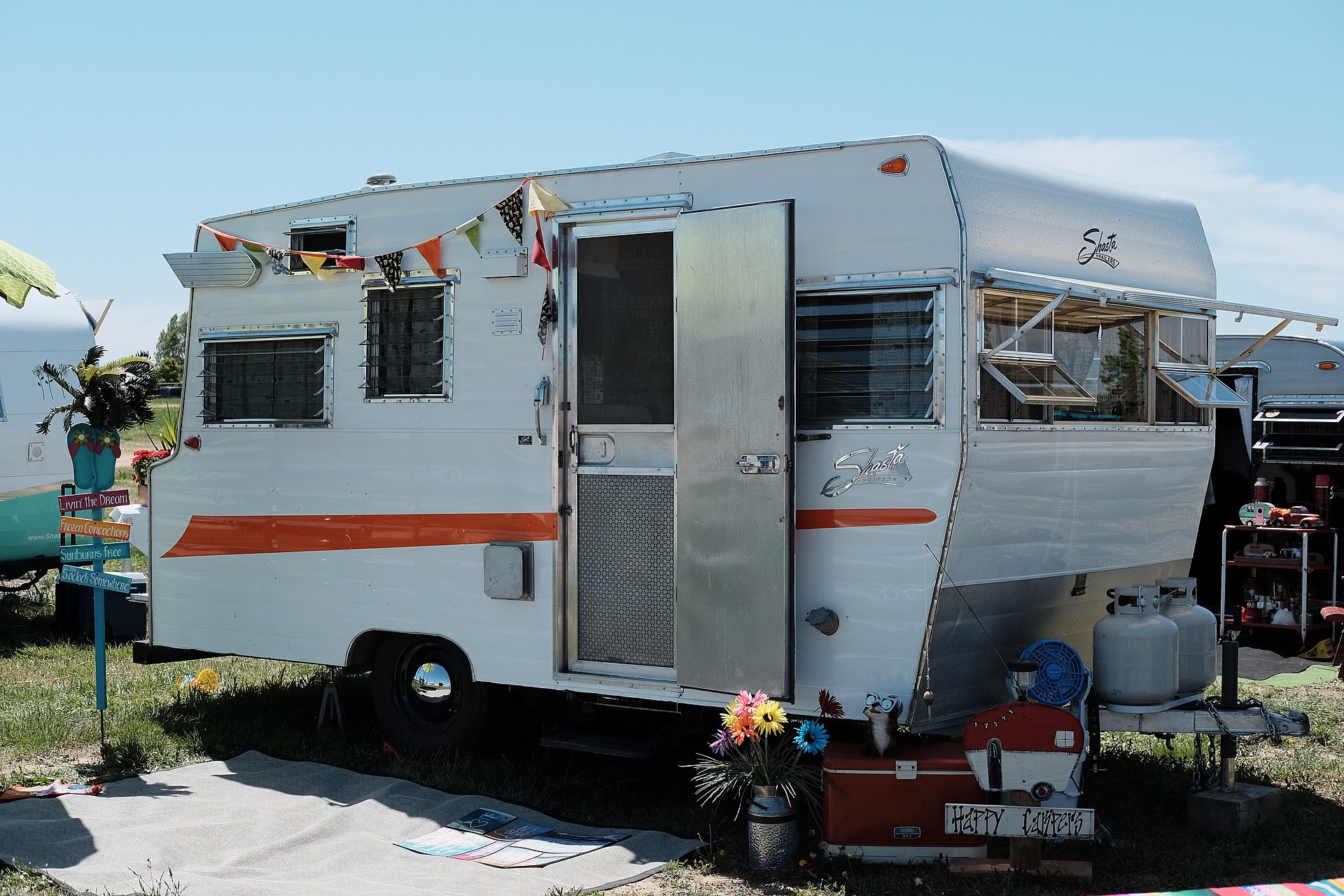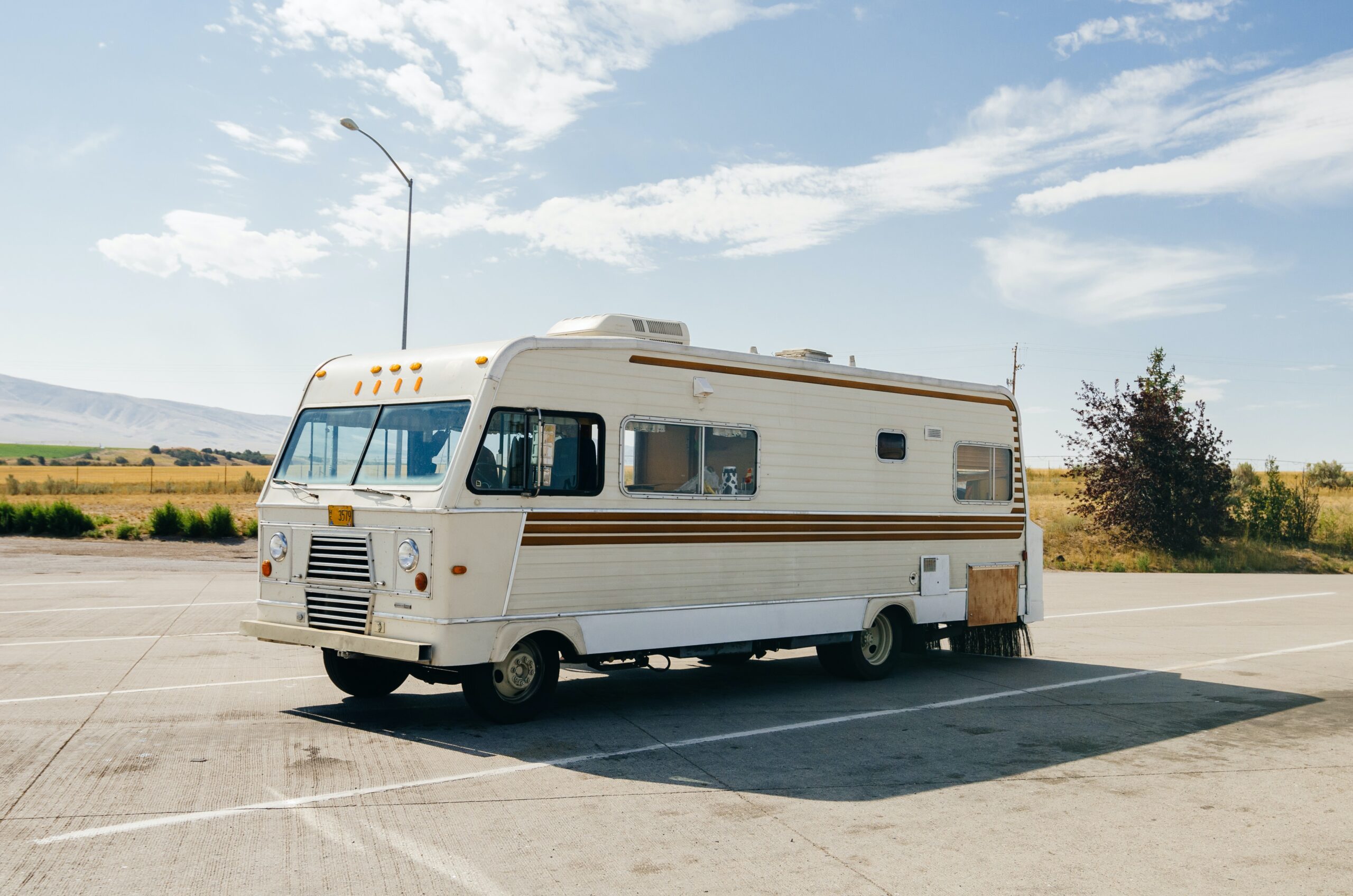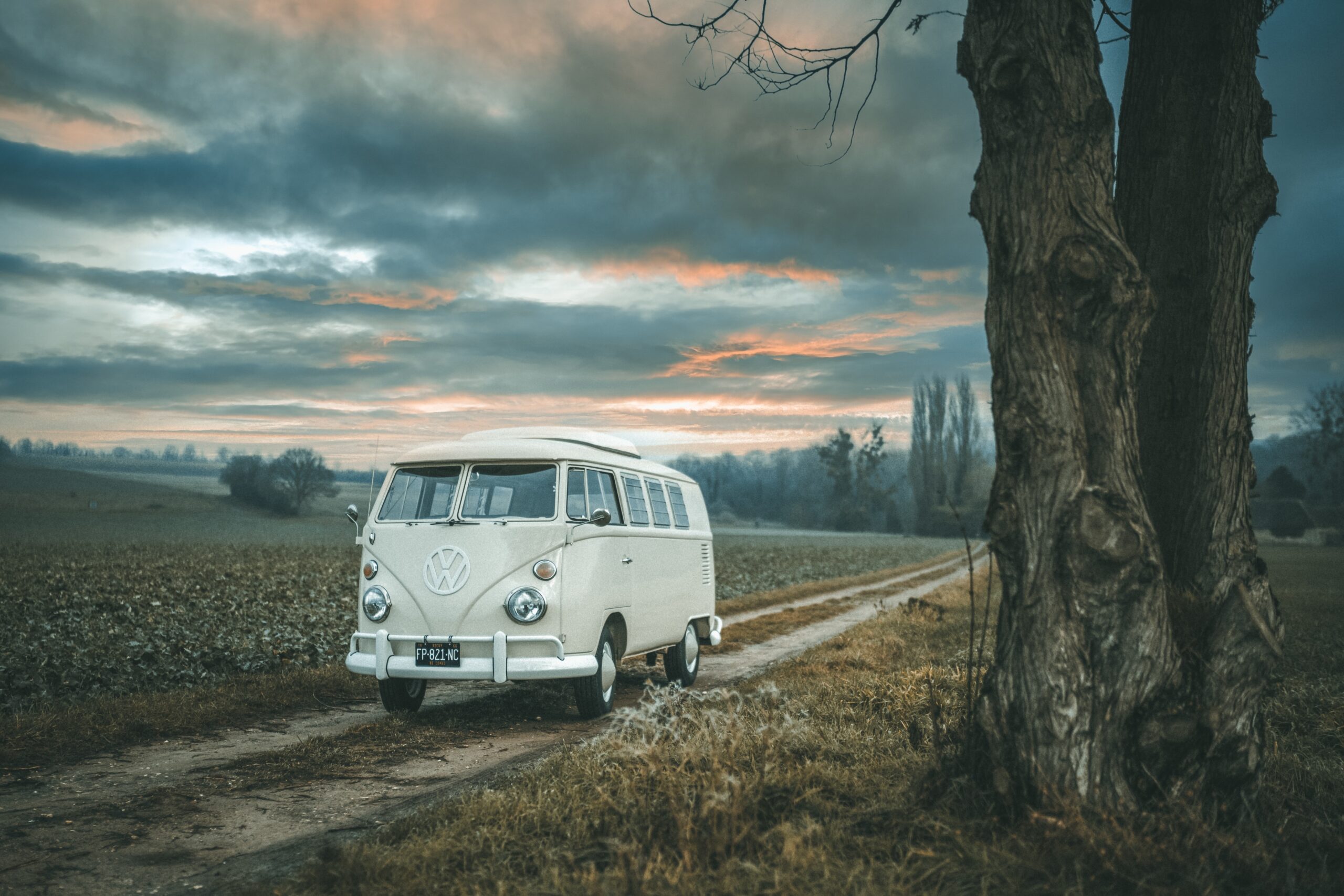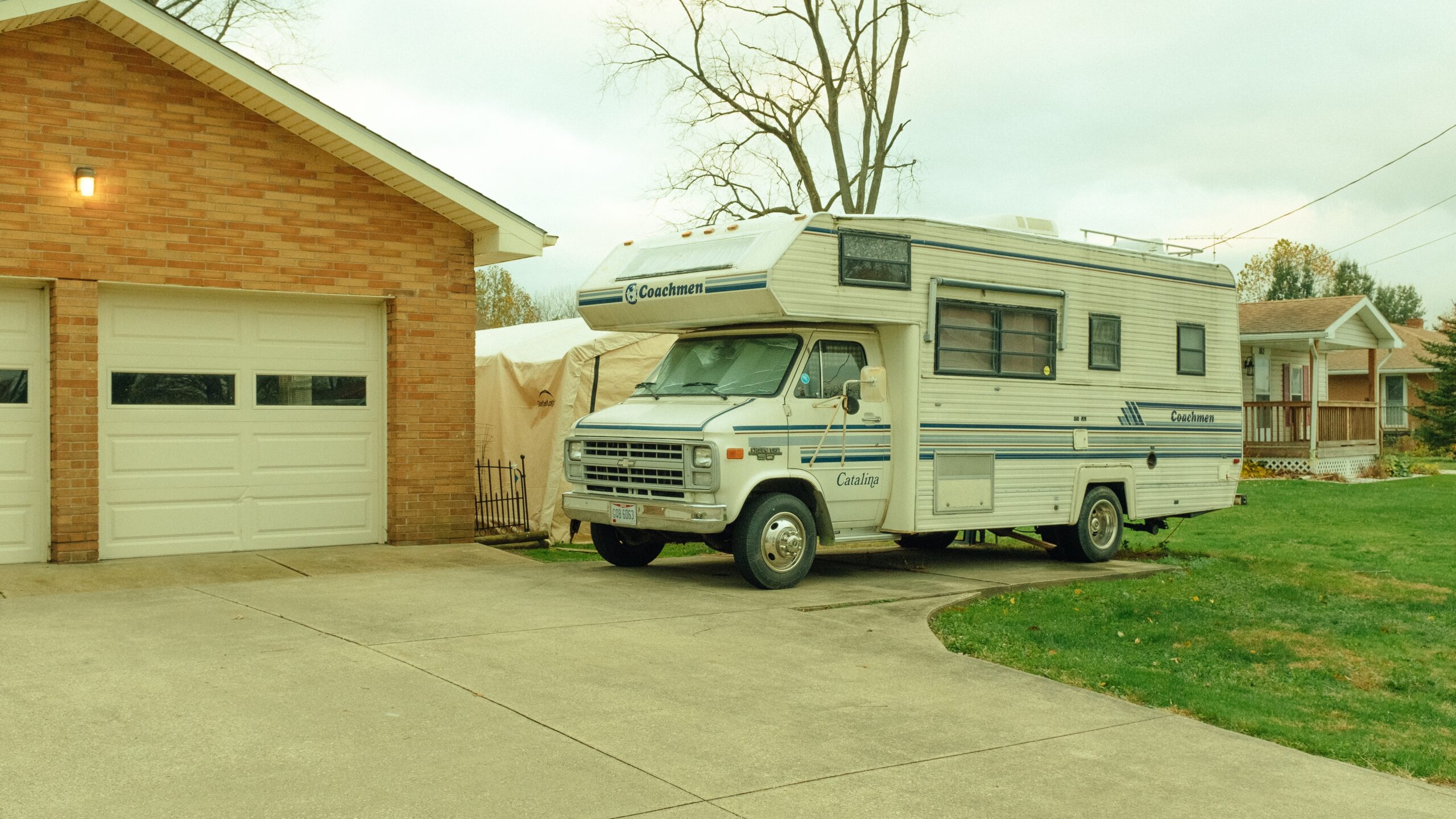Introduction
Recreational vehicles, also known as RVs, are considered to be a very popular type of automobile in recent years because of their many benefits for drivers and passengers. One of the main benefits of having a recreational vehicle is that it can serve as a temporary home for the owners and their passengers or visitors, as RVs would usually have an almost complete home setup that has a kitchen, bedroom, bathroom, and other rooms you would usually see in different kinds of living quarters. While RVs are popular today, they have been around for a long time.
With the development of the gypsy van in 1915, the initial RV prototypes were further improved. Do not be fooled by the name; gypsy vans were far more technologically sophisticated than the covered wagons that gypsies used to dwell in during the 1800s. The 25-foot, 8-ton, intelligently engineered conveyance was explicitly made for the job by Roland Conklin’s Gas-Electric Motor Bus Company. People loved mobile camping’s convenience, so the gypsy van spread like wildfire across the country.
More motorhome innovations emerged as more Americans were drawn to the idea of taming the roughness of the wilderness and as camping grew in popularity.
Motorhomes had significant drawbacks, even though traveling and camping were becoming more and more popular at this time. The fact that you couldn’t separate the home and car parts was one of the drawbacks. This meant that only routes suitable for cars could be used by RVs. The cost of RVs was another drawback. This resulted in the development of the trailer, the renowned RV’s understudy.
People on average started to choose trailers. Soon after, inventive individuals started experimenting with the functioning of tent trailers and mounting the tent fabric on a foldable frame. They further put cots, cabinets, and kitchen supplies in addition to this frame. By the middle of the decade, it was simple to buy a ready-made tent trailer.
Tent trailers had taken over as the standard by the 1930s as an alternative to the more costly motorhome. However, Arthur Sherman’s family was caught in a particularly bad thunderstorm on a fateful and regrettably rainy day. The claim that their tent trailer could transform into a completely watertight lodge in 5 minutes was undoubtedly untrue. Sherman decided to build something better after becoming naturally frustrated with his tent trailer’s lack of waterproofing. On either side of a confined central corridor, the interior of this innovative camping trailer would house a range of conveniences, including cabinets, ice chests, a stove, and built-in furnishings. The new “Covered Wagon” trailer would measure nine feet long and six feet broad.
The First RVs
Remembering the 1910 Pierce-Arrow Touring Landau, the First-Ever Production RV
Although they assist with that, the appeal of luxury RVs is not the chance to flaunt them to the rest of the world. They may appear excessively large and flashy for a trip outdoors, but they serve a market niche with lots of (wealthy) customers. Celebrities, public figures, and private individuals see them favorably as family getaways, business investments, or modes of transportation, and if they can afford them, who are we to argue with them?
The 1910 Touring Landau is responsible for popularizing the concept of home comforts while traveling, which is now found in all contemporary luxury RVs. The Touring Landau is commonly regarded as the first manufacturing RV, and its release is often regarded as the beginning of the luxury RV business. By today’s standards, it was more akin to a Class-B camper, but in 1910, it was the pinnacle of luxury.
Pierce-Arrow, one of the “three Ps of Luxury” during the first decades of the twentieth century—along with Pierce, Peerless, and Packard—built the Touring Landau. We covered a later Pierce-Arrow RV, the 1928 Fleet Housecar, better known as the Privateer, as part of Autoevolution’s RV Month theme. The Housecar was modeled after its older brother, the Touring Landau.
This car, often referred to as the Pierce-Arrow 66 Touring Landau or the Pierce-Arrow Special Touring Landau, was the first ever to have a toilet — or, more precisely, a chamber pot – inside. When Pierce-Arrow made its premiere at Madison Square Garden in 1910, it had already been producing hundreds of automobiles out of Buffalo, New York, and had made the switch from bicycles to cars a decade earlier.
The 66 Landau, the largest and most costly of the three chassis Pierce-Arrow had released the same year, served as the foundation for the Special Touring Landau. A large six-cylinder engine provided the power, but the inside had been changed. Both the Landau and the Special Touring Landau had seven passenger seats. The latter vehicle, however, had a fold-down sink with a pressurized tank concealed beneath the coachwork, a fold-down chamber pot, and rear seats that could fold down to provide a bed at night.
The back top might be detachable, allowing passengers to breathe in the fresh rural air and converse with the driver on the phone. The Special Touring Landau had a partition separating it from the rest of the vehicle because it was based on the limo Landau. Naturally, whoever could afford such an RV in those days could also afford a personal driver, and it was obvious that they didn’t want to mix with the help.
There were unique storage compartments throughout, a roof rack, and a trunk that could accommodate up to five pieces of luggage in total. When you opened the either rear door, a fold-down step would emerge automatically. The interior was entirely made of genuine leather. The fact that Pierce-Arrow produced high-quality, dependable, well-tested, and finely crafted vehicles made it one of the most well-liked automakers among the affluent. No exemption existed for this RV, which cost $8,250, more than $1,000 more than the 66 Landau. In today’s money, that’s almost $260,000 for the Special Touring Landau, while the 66 Landau was the equivalent of $225,000.
The First-Ever RV: The Gypsy Van, a 1915 Landyacht With Rooftop Garden and Hot Water
If it were not for one Mr. Roland R. Conklin and his Gypsy Van, recreational vehicles—small vans, large buses, or anything in between—would probably not be as common today as they are.
The Gypsy Van, a famous 1915 RV, is regarded as the first motorized caravan to make a long journey across America, sparking the RV revolution. Since there was nothing “gypsy” about it and it had nothing in common with what we now refer to as a van, the name is a misnomer. This was a double-decker luxury apartment on wheels with opulent features even by today’s standards since we are aware that, while money may not be able to buy happiness, it can certainly outfit a mobile home to an extravagant degree.
At a time when having the freedom to travel meant taking trains or, at best, camping, neither option was particularly comfortable or family-friendly, the Gypsy Van is (and was) the epitome of chutzpah and luxury. Roland R. Conklin, who was born into one of the richest families in the United States as a result of their several companies, invented it. Conklin had the opportunity to notice that the nation’s roadways needed to be modernized while working for the Roland Conklin Gas-Electric Motor Bus Company, one of these companies.
Conklin constructed the Gypsy Van in response to his knowledge of bus coaches and his desire to highlight the need for better infrastructure. He then chose to drive it 5,000 miles (8,047 km) across the country in three months, from New York to San Francisco. The base was a three-ton Packard truck that had been converted to seat 17 passengers and accommodate up to eight people in bunk beds. Wait till you hear about the amenities onboard if the big number of passengers impresses you.
The Gypsy Van featured 44 windows, each opening to the outdoors, each with matching velvet curtains and screens, and awnings with frames that increased the amount of space available and permitted outdoor sleeping. It was 21 feet long, 7.5 feet wide, and 6.5 feet high (6.4 x 2.3 x 2 meters). Two compartments, each with several uses, split the lower floor.
The kitchen was directly accessible from the main entrance, which was at the back of the house through a wooden door with a retractable step. There was a retractable sink, a burner and oven, a pantry, and an icebox that could store food for eight people for an entire week. There was a concealed bathroom with a shower and a porcelain basin, as well as a dining table that could grow from the ceiling when necessary. There was hot and cold water in the tanks on the roof, as well as filtered ice water for drinking that had previously been run through the icebox.
The main compartment held two sofas and four retractable (Pullman-style) bunk beds attached to the ceiling, with each bunk having privacy curtains, individual lighting, and a wardrobe. There was a dining table accessible for more formal events, and the wooden stairway leading to the roof deck could be transformed into a cards table with a custom-made surface. Behind it, there was a retractable writing desk equipped with all the necessary stationery and a bookcase.
The roof deck had a small vegetable garden, storage lockers with cushions that acted as chairs, and rails that could be lowered down to make it simpler to cross the bridge. The deck had a cover to protect them from the weather, so people could either ride on top or sleep there. The lockers included clothing, bedding, hunting and fishing equipment, and firearms. There was also a motorbike, which had the same purpose as a tender for watercraft in that it could be sent out to check a bridge or a road or to call for assistance. The crane, which could also be utilized to lift supplies, would lower the bike to the ground.
The Gypsy Van was equipped with a winch, two generators, a battery, a water pump, and strong brakes. A 6-cylinder, 60-hp gasoline engine and a sliding mesh gearbox provided the power. It was still lighter than a double-decker filled with passengers even with all the weight on it, but that doesn’t mean it was quick. Since even the press at the time noted that it had been designed for comfort rather than speed records, it must have been surprisingly slow.
Even so, it managed to finish the voyage and leave its mark on history. “It has started, not exactly a new form of recreation, but certainly a successful application, under modern conditions, of a world-old sport originating with our nomadic ancestors, namely, gypsying,” the New York Times reported in September 1915, when it reached Chicago. “We are gypsying deluxe across the continent, and I foresee the time when, with improved roads, a family party can have the choice and travel for many thousands of miles along wonderfully interesting highways amid the most varied and beautiful scenery.”
The Creation of Trailers
The Airstream Trailer by Wally Byam
Wally Byam, the company’s founder, traveled much during his life. When Wally was younger, his grandpa, a Baker, Oregon-based mule train conductor, used to take him on outings. In his adolescent years, he eventually decided to become a Shepard and slept in a donkey cart with just two wheels. He loaded this two-wheeled vehicle with provisions including food, water, kerosene, a camping fire, and a sleeping bag. This may be considered the first Airstream Bambi in concept, years before the notion was even realized.
Wally continued to build other trailers throughout his lifetime with the same tenacious devotion. In the early years, when he started experimenting with adding amenities to transform them into travel trailers, they were constructed of plywood and Masonite. He began by putting in chemical toilets, gas ovens, water pumps, and ice chests.
As Wally persisted, he began to use the techniques he had learned about building airplanes, which caused the trailers to become more aerodynamic. The strength-to-weight ratio of the travel trailers was improved by these building techniques, which also reduced wind resistance and increased durability.
When the Airstream Trailer Co. unveiled the “Clipper” on January 17, 1936, American mythology was created. Wally Byam had coined the moniker “Airstream” in 1934 because their upgraded trailers traveled down the road “like a stream of air.”
The Clipper was genuinely ground-breaking. The Clipper was pricey at $1200, especially during the Depression years, but the business was unable to produce them quickly enough to fulfill the influx of demand. It had more in common with the aircraft of the time than with its forebears because of its monocoque, riveted aluminum body. With its tubular steel-framed dinette that could be converted into a bed, it could sleep four people. It also included an enclosed galley, its water supply, and electric lighting throughout. The Clipper made a point of showcasing its cutting-edge ventilation and insulation systems, and even provided “air conditioning” that utilized dry ice.
But external threats to survival soon appeared. After the Japanese bombed Pearl Harbor in December 1941, the nation was unable to afford luxury items like leisure travel and the supplies needed to make trailers. Aluminum structural was designated as a key military material that could only be used to construct essential aircraft. Due to a shortage of tires and fuel, Wally Byam had to stop his business.
After the war, the economy grew rapidly, and people started to demand more of the products they had previously been denied. By 1948, Airstream Trailers, Inc., at its brand-new plant in Van Nuys, California, was assisting in meeting that demand. Wally was prepared to start using the information he had gained about aluminum production and design in the aerospace business in his trailer designs.
It was immediately clear that Airstream had become a well-known brand due to the seemingly endless demand for their trailers. A lease for a building in Jackson Center, Ohio, intended to service the eastern market, was signed in July 1952. By August, the California manufacturer had relocated to bigger quarters in Santa Fe Springs, and the first Airstream produced in Ohio had rolled off the assembly line.
For the following ten years, Wally continued to enhance and perfect his goods, and the business flourished and expanded. The firm changed from direct factory sales to a dealership network at this time, giving its clients even better service and response.
Then Wally Byam passed away in 1962. While Wally’s technical and organizational skills had been absorbed by his successors, the business continued to thrive. Many organizations would find it difficult to survive the loss of such a dynamic, visionary leader.
The popularity of RVs had greatly increased by the early 1970s. The first Airstream RVs were released in 1979 following several years of development.
Airstream introduced the brand-new Land Yacht motorhome in 1989. This RV, in contrast to the Classic, had a laminated fiberglass structure and front and rear end caps that were so novel that a patent was given for them. The Land Yacht is still the most popular Airstream motorhome and was an instant hit.
Airstreams may be seen in both the Smithsonian Institution and the Henry Ford Museum because of their long history of superior design and production, which led Money magazine to list them as one of the “99 things that, yes, Americans make best.” NASA chose an Airstream trailer to accommodate the first astronauts who returned from the moon. Even now, Airstream RVs are still a crucial component of the space shuttle program. Airstreams are now regarded as true American legends.
More than 70% of all Airstreams ever produced, including those constructed using the original $5 designs, are still driving along the highways today. Millions of miles have been traveled by Airstreams on some of the world’s worst roads, and Airstreamers have benefited from the ability to visit places that most people can only imagine seeing. Airstreamers are living out a dream made possible by Wally Byam’s vision and commitment as well as the pioneering spirit of those early Airstream explorers as they unwind in their climate-controlled coaches, enjoy a cold beverage, eat dinner prepared in a microwave, and watch sports on satellite TV. The Airstream Way of Life is being lived by them!
The Shasta Trailer
The popularity of the Shasta trailer in the 1950s
The Shasta Trailer Company established a plant in Los Angeles, California, in 1941 to produce mobile homes for the American armed forces. They started marketing mobile homes under the Cozy Cruiser name after World War II. The Shasta brand began to be produced in Van Nuys and distributed to customers in 1952. There were models available with lengths between 14 and 35 feet. At this time, the demand for the Shasta brand among consumers was very high as the boom in mobile homes and travel trailers was in full swing. In April 1958, Shasta built a new facility in Goshen, Indiana, to satisfy the rising demand for its goods.
The distinctive wings were initially included in the Shasta travel trailer series in the late 1950s, and they were kept on trailers and even some motorhomes until the early 1980s when they were retired. The Shasta trailer brand was the most well-liked in the US at this time. That explains why “Vintage” Shastas are still so in demand and widely available today, even after all these years.
Beginning in 1963, Shasta had grown to incorporate a second production site in Leola, Pennsylvania, and was making five different types of trailers. Later that year, to 5-star reviews, the brand-new Model 1500 was unveiled and quickly sold out. The general public is once more shown that the Shasta brand’s value is beyond its inexpensive price, which is great!
The first of the “square-ish” Shastas was originally exhibited in 1964 with the release of the updated Compact model. The general public responded favorably to it and its leaner, cleaner lines were a sign of things to come. All of the Shasta trailers would have undergone a makeover by the end of 1966 to have a more modern appearance. Along with other places, production facilities have been established in Grapevine, Texas, and Battle Ground, Washington.
The brand-new Loflyte was released to the market in 1969 and instantly gained popularity among RVers. To meet the rising demand for Shastas, a sixth facility was constructed in Columbia, South Carolina. By 1973, the firm had 500 Shasta dealers spread around the country, all of whom offered brand-new vehicles with stylish interiors and fresh exteriors that included bold side striping. They were still there, but somewhat diminished than before.
The “wings” on the rear sides served as a defining characteristic for the majority of the 1960s and beyond. The trademark was purchased by Coachmen Industries. Shasta travel trailers were advertised by Coachmen before 2004. Up until 2008, only historic trailers were sold, but the brand was revived in 2008, replete with its fabled Shasta wings. The new trailers, which have been updated with art deco interiors, don’t have gas engines. Among its numerous conveniences are stainless steel microwaves, mini blinds, sinks, hot plate cooktops, wet showers, and entertainment centers, featuring a 19-inch LCD television.
The Shasta trailer line is one of the most well-known. Shasta trailers have gained a lot of popularity since the 1940s thanks to their low price, lightweight, and large amount of space for their small size. The Shasta trailer, easily recognized by its distinctive wings and “canned-ham” style, was the most popular travel trailer brand from the 1950s until the 1980s. Due to their low cost and excellent craftsmanship, Shasta trailers quickly became a favorite of campers all over the United States. Older models are still very well-liked by collectors and restorers of antique trailers today.
You may choose the Shasta version that best suits your preferences and needs from a variety of interiors, exteriors, and levels of self-containment. Compare each vintage Shasta trailer model using the chart below to determine which is best for you.
The Winnebago
The creation of Winnebago RVs in 1958
Businessman John K. Hanson had the idea to bring Modernistic Industries from California to Forest City, Iowa to launch a local travel trailer manufacturer, and that is how it all started. The first 15-foot towable was created and offered for $895 thanks to a workforce of 17 workers and financial support from local investors. After that, in 1959, John K. bought out the other investors, significantly improved the models, and (in 1961) changed the company’s name to reflect the Iowa county in which it was based. The business was thriving when Winnebago Industries was founded.
Self-contained motorhomes first came off the assembly line less than ten years after the growth and popularity of Winnebago’s travel trailers. The F-19 was constructed in 1966 on a Ford chassis. The renowned D22 was then constructed on a Dodge chassis in 1967.
The Winnebago Chieftain debuted in 1969. Built-in vacuums and hot water systems that were connected to the engine were extras that the Chieftain came with, unlike many of its rivals. Winnebago was the leading producer of motorhomes and travel trailers at the end of the 1960s.
Several new RV companies were put to the test in 1973 when the oil embargo hurt the economy. Winnebago was able to adapt to the situation and use inventive design and marketing strategies. In 1974, Winnebago exhibited 300 RVs at the Spokane, Washington, World’s Fair. The “Winnebago Village” introduced RV life to millions of tourists for the first time, and in exchange, provided Winnebago with insightful feedback that would help the firm design its future.
With the Winnie Wagon, a precursor of today’s Class B and C motorhomes, Winnebago created a new category of RV in 1974 after listening to customer comments and developing more economical, smaller RVs. With the Minnie Winnie, another Class C vehicle from Winnebago that is being produced today, the company also debuted one of its most recognizable items.
The 100,000th motorhome was built by Winnebago, who was the first RV manufacturer to do so, in 1977. By the end of the 1970s, Winnebago offered 23 distinct models in a range of pricing points, giving consumers several alternatives for enjoying their favorite outdoor activities.
The difficulties the RV industry experienced in the 1970s were solved by Winnebago with fresh inventions and technology, but the company didn’t stop there. With their reduced weight structure, the Winnebago Warrior and Itasca Spectrum models from Winnebago virtually quadrupled the fuel efficiency of traditional versions.
With the introduction of three new RVs in 1983—the Winnebago Lesharo, Itasca Phasar, and Centauri vans—Winnebago drew a lot of people who had never traveled in an RV before. All three versions had fuel-efficient engines that could go more than 22 miles per gallon.
Winnebago had a huge year in 1988, and not only because it was now one of the most well-known brands in the country. In addition to celebrating its 30th anniversary, the business constructed its 200,000th motorhome (a 37-foot Elandan), a feat no other RV manufacturer had accomplished.
In addition, a deal with Mitsubishi Corporation was inked in Tokyo during that year. Through a recently created dealer network, this agreement made it possible to sell and provide maintenance for Winnebago and Itasca motorhomes in Japan.
The Volkswagen Westfalia Camper
The most popular and most recognizable recreational vehicle in the world.
The 1960s and 1970s: One of the most iconic vintage RVs is the Volkswagen Westfalia Camper, sometimes known as the VW Bus
One of the most famous road trip vehicles in history and a symbol of wanderlust is the Volkswagen Westfalia Camper, sometimes known as the VW Bus. Although not a true motorhome, the shape and spacious interior of the VW Bus have long made it a useful option for travelers looking for a place to sleep. Particularly during the ’60s and ’70s, when they became a symbol of the counterculture, many people converted VW buses into motorhomes.
In the 1980s, Fleetwood RVs gained a reputation as the ideal family motorhome
Since the 1950s, Fleetwood has produced RV models, but the business grew in the 1980s and predicted selling 40,000 units in 1983. Popular with families, these motorhomes were excellent for long-distance travel. You might be familiar with this RV from “Breaking Bad”; Walter White (Bryan Cranston) used it as a mobile meth lab.
The Coachmen Leprechaun is renowned for its ingenious use of space from the 1990s and 2000s
Because it makes use of the area above the driver’s and passenger’s seats, the Coachmen Leprechaun is notable. Inside the RV, an additional bunk bed is typically what it’s used for. The motorhome is reminiscent of modern RVs, which aim to feel as much like a “home” as possible, despite its multicolored stripes recalling a classic 1990s style.
The 2010s: Camper van renovations have lately gained popularity
Although many people associate RVs and motorhomes with nostalgia for road trips and Americana, the trend of living on the road has recently gained popularity. In keeping with the current tiny home trend, the hashtag “van life” on social media is flooded with images of people having fun in their restored camper vans.
The 2010s and 2020s: Modern RV models are often fully refurbished and luxurious
Nowadays, it is common to purchase an RV that has already been used and thoroughly refurbish it to turn it into a luxurious mobile home. Similar to luxury amenities, there are RVs available for purchase that have a variety of slide-outs, heated hardwood floors, and granite countertops. However, their price ranges from $200,000 to $2,000,000.
The Coachmen RVs
Brief background about Coachmen RVs
Three brothers from different backgrounds decided to launch a trailer business in 1964. To put together a profitable company, Tom, Keith, and Claude Corson each had the experience that was required. Keith was an engineer, Claude was a manager for a thriving RV manufacturer, and Tom was an accountant working as “Friendly Bob Adams” for the Associates’ Finance Company. The Corson brothers, who went by the moniker “Coach men,” established Coachmen Industries, which would eventually become one of the biggest RV producers in the nation.
However, business was off to a sluggish start. Less than 100 goods were produced in their initial year. They produced and sold 80 utility pickup truck tops, one slide-in truck camper, and twelve travel trailers throughout that year. Coachmen Industries expanded from this very unimpressive beginning via acquisition and origination to become a multilevel RV firm and, at one point, the third-largest producer of leisure goods in the United States.
Under the brand name Coachmen, the brothers produced a complete line of recreational vehicles. They bought the Viking Recreational Vehicles line of collapsible tent campers in 1968 as they continued to expand. The tent camper division of Viking soon became one of the biggest manufacturers in the country.
The Shasta Trailer Company, established in California, was later acquired by Coachmen, greatly expanding the company’s travel trailer range, which was particularly popular on the West Coast. The firm significantly boosted its position in the market for motorized RVs when it acquired the Georgie Boy firm, a motorhome manufacturer in Edwardsburg, Michigan. In 1981, they also acquired the Sportscoach brand, adding a luxury RV to their lineup. Sportscoach motorhomes were built for long-distance travel and were intended for permanent habitation.
The “The Buck Stops Here” warranty was created by the corporation. Coachmen assumed ownership of the complete RV and handled it with the appliance and part manufacturers themselves, as opposed to needing consumers to contact each component maker separately for repairs. This method quickly became the norm in the RV business since it was so well-liked.
Coachmen became public in 1969, five years after its sluggish start, and in 1983, it was included in the Fortune 500 list of the top American companies. Coachmen expanded their business into the RV supply sector with the establishment of Coachlite Supply, a full-service seller of aftermarket components. Additionally, they founded Prodesign Products, a business that makes thermoformed plastic holding tanks, raised roofs, running boards, vehicle ground effects products, as well as other plastic items for RV and vehicle manufacturers. Prodesign sprang to prominence as a producer of aftermarket fiberglass for vans and pickup vehicles.
As Coachmen Industries developed, Tom assumed the roles of CEO and chairman, Keith assumed the role of president and was responsible for overseeing all operations, and Claude, who had come up with the idea of teaming forces to form the firm, eventually left to start his businesses. Tom became quite involved in the national RV scene in addition to managing his company’s finances and marketing. He chaired various committees for both the Indiana and national RV associations throughout his long tenure on their boards of directors. Tom Corson was honored as “Indiana Master Entrepreneur of the Year” in 1996 and given a prize sponsored by the NASDAQ Stock Exchange and professional services company Ernst & Young.
Conclusion
RVs that have a long history that dates back to the early 1900s when affluent Americans started driving cars to travel and camp. As businesses started making reasonably priced trailers in the 1920s, RVs became more widely available to the middle class. Through the middle of the 20th century, RV use grew in popularity, and the oil crisis and the desire for more environmentally friendly travel options caused a surge in demand for the industry in the 1970s. RVs are still a common choice for travel and adventure today and come in a variety of types and sizes, from little campervans to luxurious motorhomes.

